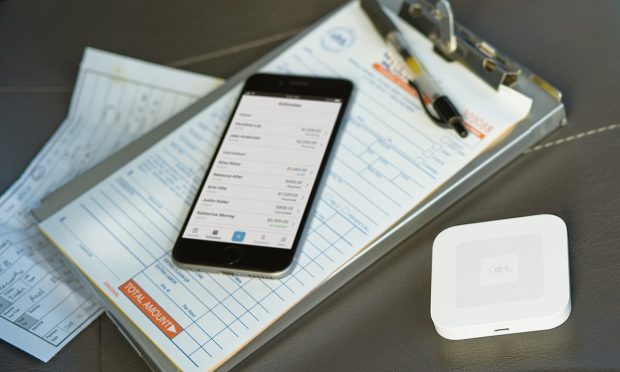Square Aims To Do For Small Business Banking What Its Card Readers Did For POS

In everyday terms, a decade is only 3,650 days. You may not look all that different today than you did in 2011, save a few wrinkles, some gray hairs, and oh, maybe 15 pounds of pandemic-induced stress eating.
But at the intersection of technology and financial services, the landscape of 2021 looks nothing like what we saw a decade ago.
Companies don’t look the same, either.
The evolution of platform economies, the app-driven culture that has swept all of us along, the “everything as a service” mindset has changed the way we live and work and how we run the businesses that serve the economy at large.
In an interview with PYMNTS CEO Karen Webster, Christina Riechers, Square Banking’s head of product, said the latest suite of financial products for small businesses, Square Banking, can fill a “gap” in business banking that has bedeviled smaller firms for a long time — and levels the playing field with their larger brethren a bit, in terms of cash flow management.
For the company itself, she said, Square Banking marks both a departure and an evolution from its original journey as a mobile point of sale (POS) provider that catered to cash-based smaller businesses that wanted to accept payment in plastic.
At a high level, she said, the Checking, Savings and Loan products unveiled earlier this month are directly connected to payments themselves, “and that makes it easier, and in some cases, an automated way for a seller to manage their business finances.”
For many micro SMBs, Reichers said it was their very first business checking account.
The Cash Flow Disconnect And The Gap
Banking, she noted, has not traditionally been connected to cash flow, siloed in different accounts such as savings or checking or loans.
That is when smaller firms have been able to tap into traditional banking relationships at all. To get a sense of the gap, consider that during the most recent economic crisis, the average Paycheck Protection Program loan for a larger firm with traditional banking relationships in place was in the six figures. In contrast, for PPP loans facilitated by Square for its smaller installed base, the figure was closer to $10,000.
As Riechers noted, Square found that many small business owners were not using traditional financial institutions (FIs) in ways one might have expected. Roughly 54 percent of Square’s debit card owners surveyed last year said it was their first business debit card. Having a dedicated business checking account (with a routing number and FDIC insured balances) can keep business and personal activities separate for tax purposes and makes it possible for Square merchants to have a single bank account that accepts deposits from all of the channels and marketplaces they sell through.
Further, many had just started tapping into ways of accessing cash flow and growth management tools that extended beyond just using personal loans, bank accounts and credit cards.
Branching out and interconnecting checking, savings, loans and debit functions through the suite announced this July, she said, can let a business owner make a sale, have the money instantly available in their checking account and access those funds to buy materials, pay staff or even pay down Square Loans (or bank some of that cash flow into savings). In what may be likened to a contemporaneous virtuous circle, Reichers said that ‘it’s appealing to have all of your business run on the same place — not across different platforms.”
Use Cases
For those companies that are invoice-focused — such as the plumbers, construction firms and electricians — the interconnectivity gives rise to efficient cash flow management. Riechers gave the illustration where an electrician out in the field can pull up his phone at the point of sale, submit an invoice, get paid on the spot, and then take the money into the checking account linked to the debit card and use the card at the hardware store to buy supplies for a job scheduled later in the week. It’s a mobile-first approach that also allows for money to be set aside in a separate fund to manage tax payments as they become due every quarter.
Through the use of data and analytics, said Riechers in describing the near-term roadmap, Square Loans will offer the ability for a seller to accept a loan offer, go through the quick application process, and then have the funds deposited into their Square Checking account the same day. “It’s a sound approach for Square,” she said, and it actually allows the company to increase loan access to underserved populations.
As the platform model affords SMBs a unified look at their payments, account balances and expenditures, Riechers told Webster, “these are the pieces that — at the end of the day — will just make sellers’ lives easier.”
